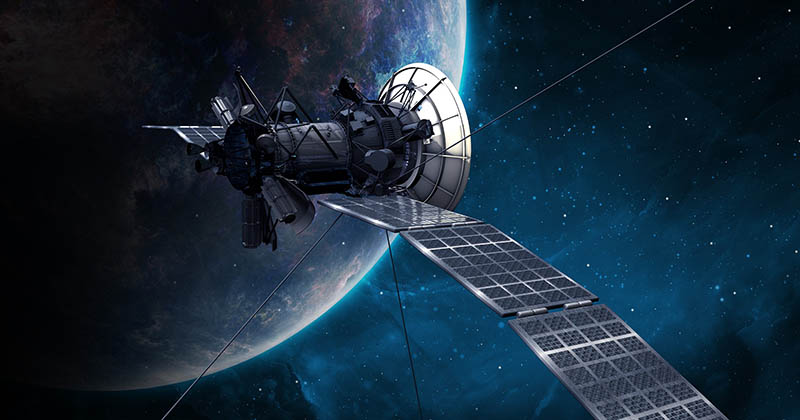September 20, 2022
 Companies are launching satellites into orbit at a dizzying pace with no plans to clean them up once they’ve completed their missions. That means dead satellites are floating in space with no one controlling them, leaving them vulnerable to collisions.
Companies are launching satellites into orbit at a dizzying pace with no plans to clean them up once they’ve completed their missions. That means dead satellites are floating in space with no one controlling them, leaving them vulnerable to collisions.
“Space is becoming more and more crowded,” said Ming Xin, professor of mechanical and aerospace engineering, “and solutions are becoming more and more urgent.”
While studies are underway on best practices to remove space debris, right now there’s no good method to know exactly what’s out there. That’s because once a satellite is no longer in use, it stops being controlled. Xin compared it to putting tens of thousands of vehicles on a highway system without any signage or traffic regulations.

“There is a centralized system that tracks when satellites are launched, and we have ground radars and orbital sensors, but they are limited,” Xin said. “They can’t keep up with the increasing number of satellites being launched into space. And space debris is not controllable anymore, so we can’t help them avoid future collisions. It’s a problem.”
Not only does space junk pose a threat to active satellites and space stations. It’s also polluting our galaxy.
“It’s affecting astronomy,” Xin said. “We have telescopes that can see very clearly and very far away, but if space is crowded with so many objects, that will block the telescope and create a lot of noise in images.”
Xin is working on a model that could not only track space objects but also predict their behaviors, including potential collisions that would send new debris and particles into orbit. He’s using machine learning to train a model with historic and current data and has plans to retrain the model when new data becomes available.
In a paper published in the Journal of Aerospace Information Systems, Xin and a collaborator outlined their plans for a data-driven surrogate model and admissible-region-based orbital uncertainty propagation.
“In our paper, we are investigating the problem of how to predict space objects accurately without measurement and without observation,” Xin said. “Using available sensing data, we’re trying to build a machine learning model that can fairly accurately predict the future position and velocity of space objects. As new measurements come in, we can retrain the model to be more and more accurate.”
The model could help determine best remediation strategies such as sending objects into high orbits away from Earth or bringing them closer to our atmosphere to burn.
“There are different techniques to remove them,” Xin said, “but we have to have a better way to track everything that’s out there.”
Be part of an innovative program studying emerging challenges in space. Learn more about mechanical and aerospace engineering at Mizzou!